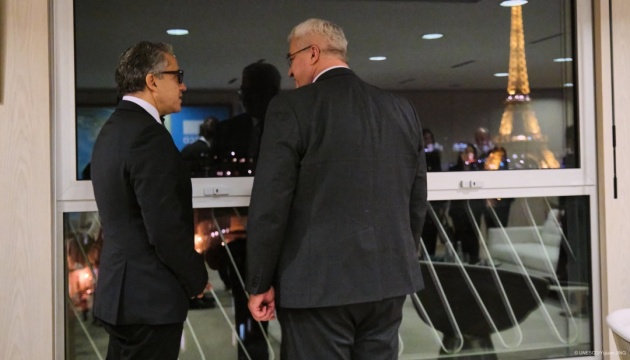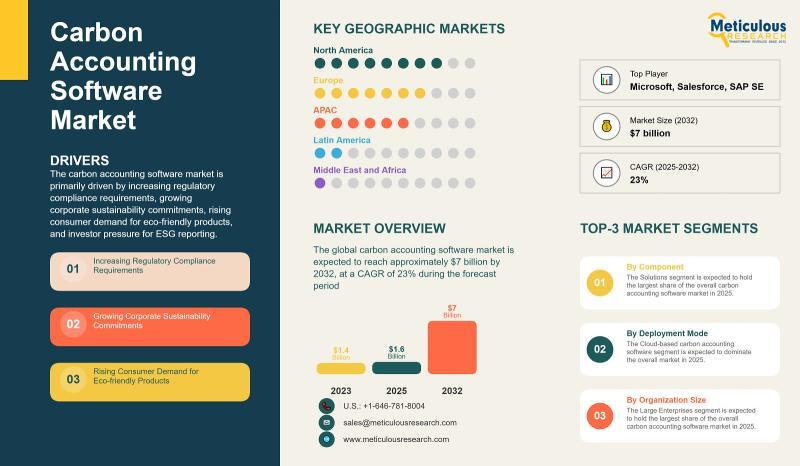Public can weigh in on Bellingham’s 20-year growth plan – Cascadia Daily News

Report on the Bellingham Plan: A Framework for Sustainable Urban Growth
Introduction
The City of Bellingham is concluding a two-year planning process for its comprehensive “Bellingham Plan,” which will guide development for the next 20 years. A final public hearing is scheduled for November 3, providing a crucial opportunity for community input before the city council’s final review. The plan is designed to manage significant projected growth while embedding principles of the United Nations Sustainable Development Goals (SDGs) into the city’s future.
Projections for Whatcom County through 2045 allocate the following growth to Bellingham:
- 30,310 new residents
- 18,390 new housing units
- 19,384 new jobs
Alignment with Sustainable Development Goals (SDGs)
The Bellingham Plan is structured around four primary themes that directly correspond to several key SDGs. These themes were developed based on community feedback and new state legislative requirements.
SDG 11: Sustainable Cities and Communities
The core objective of the plan is to make Bellingham an inclusive, safe, resilient, and sustainable city. This is addressed through strategic planning for housing, infrastructure, and land use.
- More Housing Choice: The plan aims to accommodate 18,390 new housing units by simplifying zoning regulations to encourage diverse and accessible housing options, a key target of SDG 11.
- Sustainable Growth: Proposed adjustments to the Urban Growth Area (UGA) are intended to promote compact, sustainable urban forms and prevent urban sprawl, directly supporting SDG 11.1.
SDG 13: Climate Action & SDG 15: Life on Land
In alignment with a 2023 state law, the plan integrates climate resilience and emissions reduction strategies, directly addressing SDG 13. This builds upon climate goals first established in the city’s 2016 plan.
- Climate Resilience: A central theme of the plan focuses on mitigating climate-related hazards and adapting infrastructure for future climate realities.
- Protecting Ecosystems: The proposal to remove land from the Lake Whatcom watershed UGA and retain the South Yew Street area as a UGA reserve due to its steep topography and environmental value demonstrates a commitment to SDG 15 by protecting critical terrestrial ecosystems from development pressure.
SDG 3: Good Health and Well-being & SDG 10: Reduced Inequalities
The plan introduces a new chapter on community well-being and emphasizes equity, reflecting a commitment to social sustainability.
- Bellingham for All: This theme focuses on equity, engagement, and tribal relations, directly supporting SDG 10 by working to ensure development benefits all community members.
- Community Well-being: The new chapter covers health, safety, and culture, aligning with SDG 3 by promoting the holistic well-being of residents.
Key Policy and Zoning Revisions
Urban Growth Area (UGA) Adjustments
The draft plan proposes strategic modifications to the city’s UGA to guide future annexation and development. A significant point of public discussion involves the South Yew Street area, which is proposed to be retained as a UGA reserve rather than a full UGA. The city’s planning department cites the area’s limited housing capacity relative to the high cost of infrastructure and its significant environmental value as the basis for this recommendation. This approach prioritizes development in areas like north Bellingham, which can accommodate over 1,000 new housing units more efficiently and sustainably.
Zoning Simplification for Housing Development
To facilitate the creation of new housing and simplify development processes, the Bellingham Plan will implement immediate changes to the city’s zoning code upon adoption. This includes:
- Retiring the 25 individual neighborhood plans that have created zoning complexity.
- Consolidating multiple residential zoning categories into three simplified zones: Low, Medium, and High density.
This reform is designed to increase housing choice and supply, contributing directly to the goals of SDG 11.
Public Consultation and Next Steps
Stakeholder Engagement
The development of the Bellingham Plan has been a participatory process, aligning with SDG 17 (Partnerships for the Goals). Over the past two years, the city has engaged the planning commission, city council, various boards, and the public through surveys, open houses, and focus groups to ensure the plan reflects community values and priorities.
Final Public Hearing
The final public hearing is scheduled for 7 p.m. on Monday, November 3, at 210 Lottie St. and online. This session represents the culmination of the public feedback period. Written comments can be submitted, and further details are available on the city’s engagement website. The city council will continue deliberations following the hearing, with a final adoption vote required by the end of 2025.
Sustainable Development Goals (SDGs) Analysis of the Bellingham Plan Article
1. Which SDGs are addressed or connected to the issues highlighted in the article?
The article on the Bellingham Plan addresses several Sustainable Development Goals (SDGs) through its focus on long-term urban planning that integrates economic, social, and environmental considerations. The primary SDGs connected to the issues are:
- SDG 8: Decent Work and Economic Growth: The plan explicitly includes projections for job creation, linking urban development directly to economic opportunities for the community.
- SDG 11: Sustainable Cities and Communities: This is the most central SDG, as the entire article revolves around a comprehensive urban plan for growth, housing, land use, and community well-being in Bellingham.
- SDG 13: Climate Action: The article highlights that new state laws mandate the inclusion of climate resilience and emissions reduction in the plan, making climate action a core component of the city’s strategy.
- SDG 16: Peace, Justice and Strong Institutions: The process of developing the Bellingham Plan, with its emphasis on public hearings, community feedback, and engagement, directly relates to building effective, accountable, and inclusive institutions.
2. What specific targets under those SDGs can be identified based on the article’s content?
Based on the details provided in the article, several specific SDG targets can be identified:
-
SDG 8: Decent Work and Economic Growth
- Target 8.3: Promote development-oriented policies that support productive activities, decent job creation, entrepreneurship, creativity and innovation. The article states the plan is designed to accommodate “19,384 new jobs,” directly aligning with this target of fostering economic growth and employment.
-
SDG 11: Sustainable Cities and Communities
- Target 11.1: By 2030, ensure access for all to adequate, safe and affordable housing and basic services and upgrade slums. The plan’s projection to accommodate “18,390 new housing units” is a direct response to this target.
- Target 11.3: By 2030, enhance inclusive and sustainable urbanization and capacity for participatory, integrated and sustainable human settlement planning and management in all countries. The entire “Bellingham Plan” is an example of this target in action, as it is a comprehensive, long-term strategy for managing urban growth that involves extensive community feedback through “surveys,” “open houses,” and “focus groups.”
- Target 11.b: By 2020, substantially increase the number of cities and human settlements adopting and implementing integrated policies and plans towards inclusion, resource efficiency, mitigation and adaptation to climate change, resilience to disasters. The plan’s four themes, including “sustainable growth and climate resilience,” and its new chapter on “community well-being,” demonstrate an integrated approach to urban planning.
-
SDG 13: Climate Action
- Target 13.2: Integrate climate change measures into national policies, strategies and planning. The article explicitly mentions that a “state law adopted in 2023” requires local governments to “include climate-related hazards and emissions reduction in their comprehensive plans,” which is precisely what Bellingham is doing.
-
SDG 16: Peace, Justice and Strong Institutions
- Target 16.7: Ensure responsive, inclusive, participatory and representative decision-making at all levels. The article details a robust public participation process, including a “Nov. 3 public hearing,” opportunities to “submit written comment,” and previous “surveys, open houses and focus groups,” all of which are mechanisms for inclusive decision-making.
3. Are there any indicators mentioned or implied in the article that can be used to measure progress towards the identified targets?
The article provides specific quantitative and qualitative indicators that can be used to measure progress towards the identified targets:
-
For SDG 8:
- Indicator: The number of new jobs created. The article provides a specific projection of “19,384 new jobs” that the plan aims to accommodate, which serves as a direct quantitative indicator.
-
For SDG 11:
- Indicator: The number of new housing units built. The plan’s goal to accommodate “18,390 new housing units” is a clear metric for progress on Target 11.1.
- Indicator: The existence and implementation of a participatory urban plan. The “Bellingham Plan” itself, and the documented process of public engagement (“public hearing,” “surveys,” “focus groups”), serves as a qualitative indicator for Target 11.3.
-
For SDG 13:
- Indicator: The adoption of an integrated plan that includes climate change mitigation and adaptation. The article confirms the draft plan builds on previous climate goals and incorporates “climate-related hazards and emissions reduction” as required by state law, making the plan’s adoption an indicator of progress.
-
For SDG 16:
- Indicator: The structure and frequency of public participation in decision-making. The article’s description of the city’s engagement methods—”public hearing,” “surveys,” “open houses,” “focus groups,” and the process for submitting “written comment”—are all indicators of a participatory process.
4. Table of SDGs, Targets, and Indicators
| SDGs | Targets | Indicators Identified in the Article |
|---|---|---|
| SDG 8: Decent Work and Economic Growth | 8.3: Promote development-oriented policies that support decent job creation. | The plan’s projection to accommodate “19,384 new jobs.” |
| SDG 11: Sustainable Cities and Communities | 11.1: Ensure access for all to adequate, safe and affordable housing. | The plan’s goal to accommodate “18,390 new housing units.” |
| 11.3: Enhance inclusive and sustainable urbanization and capacity for participatory planning. | The existence of the “Bellingham Plan” and the described public engagement process (surveys, open houses, public hearings). | |
| SDG 13: Climate Action | 13.2: Integrate climate change measures into policies, strategies and planning. | The requirement by state law and the plan’s inclusion of “climate-related hazards and emissions reduction.” |
| SDG 16: Peace, Justice and Strong Institutions | 16.7: Ensure responsive, inclusive, participatory and representative decision-making. | The use of public hearings, surveys, focus groups, and opportunities for written comment to gather community feedback for the plan. |
Source: cascadiadaily.com
What is Your Reaction?
 Like
0
Like
0
 Dislike
0
Dislike
0
 Love
0
Love
0
 Funny
0
Funny
0
 Angry
0
Angry
0
 Sad
0
Sad
0
 Wow
0
Wow
0














































.jpg.webp?itok=0ZsAnae9#)







:focal(1500,1000)/https://media.globalcitizen.org/a6/9a/a69a4720-d8a1-4715-b596-18738d03c05c/rotary_polio_hero_image.jpg?#)

/countries/sri-lanka/photo-credit---dmc-sri-lanka.tmb-1200v.jpg?sfvrsn=dc298bcc_1#)



















